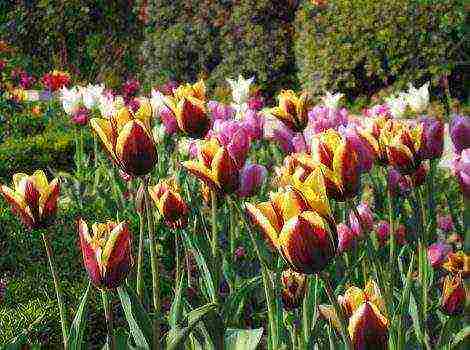Content
- 1 We read carefully the information on the package
- 2 What do the labels on the packaging mean?
- 3 We carry out a visual inspection
- 4 How to choose ceramic tiles. Video
- 5 Ceramic tile marking
- 6 How many tiles are in a square meter. Tile area "
- 7 Different tones of tiles and why it is dangerous to buy additional tiles after 2 years
- 8 What determines the cost of monocolors
- 9 What is tile size and why is it important to pay attention to it when buying?
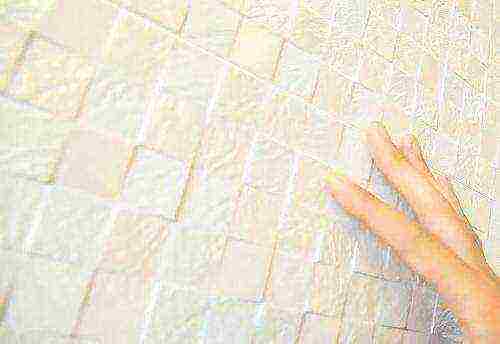 The modern construction market today offers a huge selection of tiles. This is also a tile intended for laying on walls and floors. Today, a huge number of enterprises are engaged in the production of tiles, producing material in huge quantities, but not always of high quality.
The modern construction market today offers a huge selection of tiles. This is also a tile intended for laying on walls and floors. Today, a huge number of enterprises are engaged in the production of tiles, producing material in huge quantities, but not always of high quality.
I would like to talk about the quality of tiles and how to choose tiles that will last for many years in this article.
We read carefully the information on the package
The very first place where a lot of interesting and useful information is posted is packaging. If you know all the symbols and designations printed on it, then you can easily find out all the necessary characteristics of this ceramic product.
Tile varieties

Before buying a tile, you should figure out which grade you need. As a rule, all tiles are subdivided into 1, 2, 3 and commercial tiles.
1. If the package is marked in red, it means that the offered tiles are of the first grade. It is characterized by a five percent quality tolerance, that is, for every hundred tiles, five are allowed with a slight defect. There is nothing wrong with this, since during the work, anyway, some part of the tiles is cut off, or the tile with a defect is placed in an inconspicuous place.
2. Tiles of the second grade are marked in blue or blue, which, as in the first case, has a quality tolerance of five percent, the whole difference lies only in the visibility of existing defects. In the production process, the sorting of second-grade tiles for visible defects is carried out at a distance of 2 meters, while the material of a higher first grade is at a distance of 1 meter.
3. The tiles of the lowest third grade are marked in green, to which the material that did not pass into the second category belongs. Such tiles are characterized by a variety of defects: from visual to size discrepancies.
4. Slightly different from the third grade of commercial tiles, where the main difference is a small variety of colors. Do not forget about one subtlety - such marking is inherent in manufacturers with the UNI EN certificate, which is an analogue of our GOST. In the event that the manufacturer does not have such a certificate, then this can significantly affect the grade marking. If the tile is produced by a domestic manufacturer, then you will need to carefully study the certificate and packaging of the goods, where all the criteria for defect and grade are spelled out in letters and numbers.
Abrasion of tiles
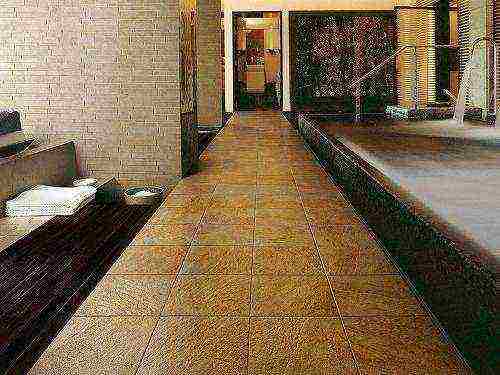
Having studied all the questions regarding the sorting of tiles, you need to pay attention to the categories of its abrasion. This is especially important for floor tiles.
Tile abrasion is divided into five categories:
- First category.The tile is used in those rooms where there are few people, in other words, it is suitable for laying in apartments, private houses. The tiles of the first category are suitable for both the flooring in the bathroom and the bathroom.
- Second category. This type of tile is also suitable for use in private residential premises, but has a longer abrasion period. As a rule, such material is used everywhere except for hallways and flights of stairs.
- Third category. Tiles of this category are used in residential premises with low and medium traffic. Its use is allowed, unlike the previous category, in rooms of any type, including flights of stairs with low traffic.
- Fourth category. This tile is already considered a solid coating, which can be used in rooms that are characterized by medium and even high traffic, it can be laid anywhere, without regard to the number of people passing through it.
- Fifth category. Tiles of the highest fifth category can be installed in any type of premises, both commercial and residential. It is capable of serving for a very long time and practically does not wipe off.
More and more popularity has recently been enjoyed by porcelain stoneware tiles. The combination of materials contributes to the creation of a veneer with high abrasion resistance and durability. This tile does not belong to the above categories, because it is not easy to even just scratch it.
What do the labels on the packaging mean?
In addition to grades and categories, there are many graphic symbols on the packaging of the material.
A horizontal line with numbers and arrows indicates the thickness of the tile.
The square, which has multi-colored small tiles, reflects the culling of the material by color. One tile pack can consist of tiles made in different batches with differences in shades.
Slash, adjacent number and boot. The sign means that the tile is resistant to slipping, and the higher the number, the less slippery the tile.
The sole pattern means that the tiles must be laid on the floor.
A handprint indicates that the tile is designed to be wall-mounted.
Cogwheel and PEI inscription - the tile has high wear resistance.
The snowflake means that the tiles can be laid outdoors, as they have high frost-resistant characteristics.
We carry out a visual inspection
Without carefully examining the tiles, without holding them in your hands, it is difficult to answer the question of which tile to choose.
How to choose the right tile?
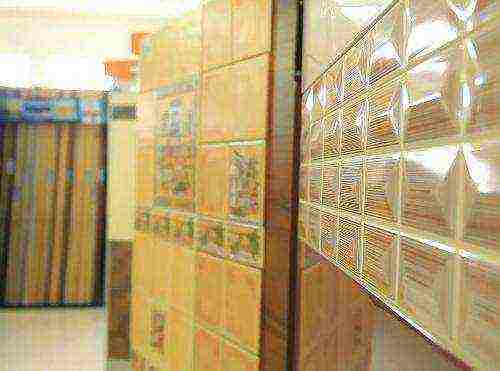
It is worth familiarizing yourself with the main features of high-quality tiles, this will help you not to make a mistake in choosing the right material.
First of all, you should pay attention to the manufacturer's logo on the packaging. The more famous the manufacturer, the higher the quality of the tile.
The second most important factor is the thickness of the tile - the thicker it is, the stronger it is. Of course, we are talking about millimeters. However, even a millimeter of thickness gives the tile significant strength, which means that the risk of breaking it during operation is reduced.
In no case should you buy a tile that has a red or yellow stripe on the enamel, as the manufacturer usually marks the marriage.
The transparency of the tiles also means that tiles should not be purchased. Looking at the light, you can see the mesh, which means that the painting was done according to a simplified method using fabric, the fibers of which were printed on the front side.
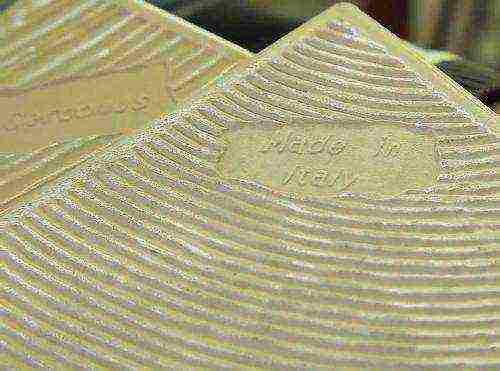
The tile must have the manufacturer's logo, which is imprinted in the body of the tile from the back.
It should also be remembered that the tile must be checked for sound, you can determine the sound by tapping it while holding it in your hand. Clay, poorly fired, sounds hollow.
We also check the ability of clay to absorb moisture. Tiles on the back of which water is applied must not absorb water. On high quality tiles, moisture collects in drops.If the tile pulls water very strongly, then with a sharp drop in temperature it can simply break.
If we talk about the quality of tiles intended for laying on the floor, then one of the most important characteristics here is wear resistance, which can be checked in the process of friction. This is done as follows: the tile of the tile is placed with its front side on a rather rough surface. After being moved a little over this surface, there should be no trace on the tile.
In this article, we tried to talk about all the available methods of checking and choosing tiles, however, there is one "but" - none of the hardware stores will allow you to apply all the checks. So, most likely, you will have to use only part of the knowledge gained, well, and, of course, rely more on the recommendations of specialists, but you hardly need to listen to the advice of sellers.
In general, that's all that we wanted to tell you, we can only wish you good luck and a high-quality purchase.
How to choose ceramic tiles. Video
Have you decided to lay the tiles yourself? That's right, the cause is good, grateful and self-respecting with an excellent result. And he will certainly be, if you do not do a mess, but get into all the secrets and subtleties, ask, without hesitation, from experienced tilers, or at least from those who, at least once, have laid the tiles. Some secrets can be found here.
Ceramic tile marking
Nowadays, owning information means owning the hardest currency. Often this information is on the surface, in plain sight, but not everyone can read it. This happens with almost all manufactured goods: as a last resort, I read what is written, examined the picture, figuring for myself that it is designed for idiots. But it's good if this is only a tenth of the information. For ceramic tiles, it is applied to the packaging. A different color of the inscriptions does not mean that the packers have run out of ink of a particular color. Pictograms are not a rebus for leisure activities, Latin letters and Roman numerals are not Masonic ciphers that go back centuries. It doesn't hurt to figure it out ... It's just that all the information includes different categories: physical, chemical, type and species, grade and size compatibility, etc., and it is presented in different ways.
Ceramic tile grade
There are four types of ceramic tiles. If the tiles are produced by a company adhering to international standards, the color of the markings will be red, blue or green. This is how the types of tiles are designated:
- - 1st grade is marked in red, it should not have more than 5% of rejects;
- - the 2nd grade has a blue marking, marriage in it - 5-25%;
- - 3rd grade with green marking allows more than 25% of rejects;
- - the commercial grade is about the same in quality as the third grade, but it is characterized by increased wear resistance. Since it is the cheapest, while improving one indicator, one has to sacrifice another, in this case the poverty of tones, colors and shades. The marking can be the same as in the third grade, that is, green.
Marriage does not mean broken tiles or chips on them. It may be a scratch, roughness, or any blotches that is not noticeable for a couple of meters. In addition, the second and third grades rarely go on sale, since the manufacturer does not want to spoil his reputation. Usually first and commercial grades go.
Symbols that characterize the tiles
- a pictogram indicating the thickness of the tiles. When laying tiles, this is just as important a characteristic as the tile size. The amount of adhesive mixture, solidity and smoothness of laying depends on it;
- icons denoting floor or wall tiles. Even a non-specialist understands that the floor tiles in the wall will not look so hot, the wall tiles will not lie on the floor for a long time;
- an icon similar to a mosaic, indicates that the tiles in the parties can have a different shade;
- this scary saw speaks of abrasion resistance. According to this indicator, the tiles are divided into six classes (0, Ι-V). The lower the class, the greater the abrasion. Therefore, a PEI tile equal to 0 will only go into the wall. The five will withstand a long time in the floor .. By the way, sometimes tiles with increased wear resistance are depicted with a foot on the surface, which is shaded.
- this pictogram indicates the surface hardness of the tile. Such an indicator characterizes whether we or our children will be able to scratch the tile or make a chip on it. The scale of hardness of minerals is taken as a basis, where the softest mineral talc has a hardness of 1, the hardest mineral is diamond - 10. Enamel tiles have a hardness of "5", glaze - "6";
- resistance to chemically active substances. This primarily applies to acids and alkalis. Tiles, especially those coated with glaze, are inert to their effects. And this means that stubborn dirty spots will not form, which certainly do not make the tile attractive;
- this icon shows how much area can be covered by the contents of the box. An important characteristic, especially when purchasing cladding material. Thanks to this, you can estimate how many tile boxes you need;
- these two icons mean the weight and number of tiles in the package;
- bending resistance pictogram. For floor tiles, the indicator is very important, it shows the load that the tile can withstand without destruction. It is determined by pressing in three points: two stops from below and the application of force from above;
- the first icon indicates resistance to temperature extremes, the second means frost resistance, that is, resistance to negative temperatures. Naturally, these characteristics are more important on façade cladding;
- slip resistance. The characteristic shows how great the risk of "stretching" in the bathroom or near the pool. Five risk classes depending on the frictional force (RΙ-R5). The best friction is where the digital reading is higher.
Color and pictogram marking is relevant, because the market has both its own and imported tiles. Do we know many languages?
How many tiles are in a square meter. Tile area "
Do you need to measure floors and walls and calculate the area covered by tiles? I figured it out by eye, bought it, if it wasn't enough, I went and bought it. But no! The danger is too great that the purchased tile will differ in size and color tone. Why is that? Clay is different from clay if you take it from different quarries, which means that their physical and chemical properties are slightly different. What color the tiles will have, and what caliber they will become, no one will say with absolute certainty. So it's better to buy it from one batch.
Simple arithmetic
Estimating how many tiles are needed to cover a particular area is a task for a third grader. From the beginning, you need to measure the sides of the tile, and calculate its area. To make it easy to count, for example, let's take a 10 x 10 cm tile.We get 100 cm2, or 0.01 m2.
Next, you need to measure the area that will be covered with tiles. Let's say this is a bathroom wall 2 m long and 2.2 m high.The area of this wall will be
2.0 x 2.2 = 4.4 m2.
And now we divide the area of the wall by the area of one tile. In our example, this is 4.4: 0.01 = 440. So, according to a rough estimate, 440 tiles come out.
Now you need to ask the seller (or read on the label) how many tiles are in one box. For example, fifty. We divide 440: 50 ≈ 9. That is, with a small margin, you need 9 boxes of tiles of this size.
The last calculations were practically unnecessary. The fact is that the packaging almost always indicates how much area can be covered with the contents of this box. You can immediately divide the wall area by this value. The result will be the required number of packages.
Not so simple
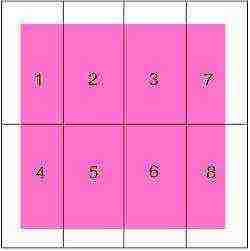 For fear of spoiling several tiles, for fear of marriage, given the possibility of buying tiles of a smaller caliber, it has already become customary to take tiles with a margin.But the buyer is also in danger of buying an insufficient amount of tiles.
For fear of spoiling several tiles, for fear of marriage, given the possibility of buying tiles of a smaller caliber, it has already become customary to take tiles with a margin.But the buyer is also in danger of buying an insufficient amount of tiles.
In the last calculation, we did the simplest arithmetic. Yes, that method of counting tiles will work as well, but only if the length and width of the room are multiples of the length and width of the tiles. That is, when an integer number of tiles can fit in its width and length. Also, the calculation would be correct if the room was covered with the smallest pieces of tiles, using all of it. In practice, there are almost no such rooms, and the tiles are not crushed - it turns out ugly. You have to take more tiles, sometimes a lot more. The following example is most often given: it is necessary to cover 1 m2 with tiles measuring 30 x 60 cm.According to calculations, it would come out 1: (0.3 x 0.6) = 5.5 tiles. Looking at the drawing, you understand that it is best to get by with eight (you could have used seven tiles, but you would have to insert the cut off small pieces). Tiles were needed one and a half times more from the initial calculation.
Of course, this is more often the case with large tiles. Maybe things are better with smaller tile sizes? Better only because there will be less waste, but they will still be. How else can you cover a corridor 248 cm long and 124 cm wide with 10 x 10 cm tiles?
As you can see, not only arithmetic, but also elements of descriptive geometry have taken place in calculations.
And how is the number of tiles calculated if the floor of one of the rooms has a complex configuration? The room is broken down into a few simple geometric shapes. The number of tiles for each of the figures is calculated, the data is summed up. But before that, you need to sit with a sheet of paper, a pencil and a ruler, draw a sketch of the geometry of the stacking.
When buying, taking into account possible mistakes, battle and the complexity of the configuration, it is better to take tiles 10% more than the counted number. Will they stay? Well, thank God, in case of repair or replacement of several tiles, the question of tiles of the desired tone and caliber will not become an edge.
Different tones of tiles and why it is dangerous to buy additional tiles after 2 years
I bought a tile, installed it, if it did not match, cut it off and everything will be tip-top. Most often, this is how the laying of tiles is presented. But only until you see with your own eyes the mismatch of the corners of the tiles or unnecessary shades: instead of pale pink, light orange appears. That is, in addition to the sizes, the colors of the tiles to be laid may not match.
Why is it necessary to take tiles from the same batch?
We are waiting for tiles of one tone from the conveyor, but we get another. It seems that all the nuances of the technology have been observed. The only difference is that the expected tiles were not from the same batch of clay or came out of the oven at the wrong time when the others were being fired. The reason for this discrepancy is that the composition of different clays is at least somewhat different. In the same way, as, albeit slightly, the temperature regime differs. If artificial, chemical dyes were used, it would be incomparably easier to achieve identical tones. In fact, it turns out that the color and tone of the tiles are given by oxides and salts of different metals. It is difficult to predict how each of the clay components will behave during firing. And you cannot achieve the desired result with chemical dyes: it is not clear what shade will be obtained from mixing natural and artificial pigments.
So much for different color shades, tone mismatch. Moreover, a change in tone can occur during firing within one day. What can we say about the fact that it is almost impossible to buy additional tiles of the desired tone in a couple of years. Thus, there is absolutely no possibility of custom-made tiles in the desired tone.
What to do if tiles of the right tone are missing?
After all, it is still necessary to report the floor or wall with tiles. The way out is to find a tile that is close to the installed one in tonality. How? And here the marking will help out. The tone is indicated by letters and numbers. First there is a Latin capital letter, then numbers. For example, two tiles have tones A50 and D42. Tone A will be brighter than Tone D, numerically a lighter tone will have a lower value.
When you come to buy a tile, for example, A50, you must first ask the seller if there is a tone A50. If it is not there, then you need to take a tile with any numerical indicator, but with the letter A. Moreover, the closer the figure in value to the desired one, the better, the difference is almost indistinguishable. In this example, the closest tones would be A49 and A51.
The figure shows an example of writing a tone (at the beginning of the top line).
It is not at all necessary to travel to shops and markets in the city with tiles in your pocket in the hope of finding what you are looking for. You can just call there. If we use words to name color, shade and tone, then, most likely, they will not understand us. To understand, somewhere we must have recorded information about the country of origin, factory, collection name, color, size, article, tone and caliber. And you also need to know that the tone of the tile is not a defect or a marriage, and if we bought this product and it did not fit, we are not obliged to take it back in the store.
Is there an alternative?
 In principle, there is. To forget about the tonality of the tiles once and for all, you can lay tiles made in antique or rustic styles. It was originally conceived here that the tiles should be in different colors: if the wall is stylized as the wall of a medieval castle, then what's the difference, what tones are in the image of the boulder: it is understood that it is several centuries old, it could not only change its tone, but even become covered with moss.
In principle, there is. To forget about the tonality of the tiles once and for all, you can lay tiles made in antique or rustic styles. It was originally conceived here that the tiles should be in different colors: if the wall is stylized as the wall of a medieval castle, then what's the difference, what tones are in the image of the boulder: it is understood that it is several centuries old, it could not only change its tone, but even become covered with moss.
What if the tiles have already been purchased, but the tones do not match? You should know that tiles of the same color, but different tones, differ only when they are in the same plane. So that the differences are not noticeable, it is necessary not to lay them side by side, but to distribute them along different walls. What changed? Firstly, they are now in different planes, and secondly, light falls and reflects on them at different angles, hiding the differences in tones.
What determines the cost of monocolors
In practice, the name of the monocolor conveys its main distinguishing feature: it is a one-color and one-color tile, where there should be no blotches and stains. True, people of the older generation are wary of this word: in the era of developed socialism, tiles existed only in the form of a monocolor, and it was all pale pink, mostly pale, if not faded.
Modern monocolor
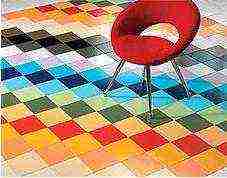 Today, plain tiles have completely changed their look. These tiles are of different colors and tones, bright and beautiful. Some collections have over thirty different colors. And there are countless companies and firms producing monocolor tiles around the world, and each has its own dyes. So there is plenty of room for imagination when working with colored tiles. Not only do the surfaces laid out by a monocolor look great anyway, but amazing ornaments, futuristic pictures, interesting geometric patterns are formed from combinations of its different colors. The most famous are the Spanish and Italian monocolors. And although domestic manufacturers have approached the foreign ones in terms of the quality of the tile and the number of its variations, they use the design developments of Spain or Italy. And the point is not that there is not enough imagination, it is just that the manufacturer is sure that such a product is liquid, and the profit is guaranteed to him.
Today, plain tiles have completely changed their look. These tiles are of different colors and tones, bright and beautiful. Some collections have over thirty different colors. And there are countless companies and firms producing monocolor tiles around the world, and each has its own dyes. So there is plenty of room for imagination when working with colored tiles. Not only do the surfaces laid out by a monocolor look great anyway, but amazing ornaments, futuristic pictures, interesting geometric patterns are formed from combinations of its different colors. The most famous are the Spanish and Italian monocolors. And although domestic manufacturers have approached the foreign ones in terms of the quality of the tile and the number of its variations, they use the design developments of Spain or Italy. And the point is not that there is not enough imagination, it is just that the manufacturer is sure that such a product is liquid, and the profit is guaranteed to him.
What determines the cost of a monocolor?
The fish is looking for where it is deeper, and the buyer, where it is cheaper. So, while researching the ceramic tile market, he notices that sometimes prices for monocolors differ by an order of magnitude. Accusing the entire trading system as a whole and each individual seller of greed, he is almost wrong. Trading is obliged to take its own percentage, but this percentage will never reach 900% (this is the case with a price that is an order of magnitude higher). Here the reasons are different:
- - technology and scale of production;
- - monocolor color;
- - materials used.
Price and production
Large factories produce very large batches of monocolor, therefore, unit costs are reduced. In addition, they have guaranteed sales.And so, in order to retain the consumer and attract new customers, prices are reduced within reasonable limits. Small business entities cannot afford this, otherwise they will work for a penny.
On the other hand, small firms sometimes bake the tiles all day long, producing richer glaze tones. A large factory often takes a couple of hours to bake, since during this time they manage to go through all the chemical and physical reactions in the glaze and tiles. Of course, tiles with rich colors will cost more, especially since they are more energy-consuming.
One more point. It has already been mentioned that each time after firing the tiles have a different tone from the previous batch. So, if you sell different monocolor tones, like tiles of the same color, the products will have a low price. Some businesses do just that. Others will send an unnecessary shade to marriage and battle. It is clear that the cost of the rest of the tiles will increase significantly.
Color and price
Beige, white and gray monocolors are always cheaper, as the dyes for them have a low cost. The most expensive tiles are orange and red. Not only are dyes expensive for them (they are based on the village), but the villages also give black blotches when fired. For a monocolor, inclusions are unacceptable. Such tiles are immediately rejected. This means that the price of the remaining tiles is growing.
Price and materials
And the cost of a monocolor will certainly depend on the prices of raw materials, that is, materials. For example, the cost of white clay is higher than the cost of red. This means that both the tile and the glaze made from it will be more expensive than from red. The thicker the tiles, the more expensive. Strength also affects the cost of a monocolor. The most expensive will be a monocolor made of porcelain stoneware, and if it is still painted throughout its entire thickness, then in general ...
Monocolor can be bought both cheap and expensive. The choice is great, and you can save some money. But it should be remembered that the brightness and depth of tones depends on the degree of baking and the quality of the glaze, and this is much more expensive.
What is tile size and why is it important to pay attention to it when buying?
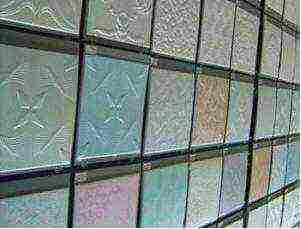 Anyone who has laid a tile at least once noticed one oddity: it happened that tiles of the same size, but taken from different packages, did not form even rows. I had to increase the width of the seams in order to fit the next row normally. Faith in all of humanity was lost, as it seemed that they had slipped a marriage. And it was not there, just tiles of different calibers came across within the same size. After all, they were taken from different packages, and the packages were unknowingly taken from different parties.
Anyone who has laid a tile at least once noticed one oddity: it happened that tiles of the same size, but taken from different packages, did not form even rows. I had to increase the width of the seams in order to fit the next row normally. Faith in all of humanity was lost, as it seemed that they had slipped a marriage. And it was not there, just tiles of different calibers came across within the same size. After all, they were taken from different packages, and the packages were unknowingly taken from different parties.
Why are tiles of the same size, but taken from different batches, not the same?
The reason is the same as with the tone mismatch. Clay from another deposit gets into another batch. Albeit a little, but its composition is different from the composition of the previous clay. And if the composition is different, then the properties are also different. And at the same drying and firing temperature, these clays decrease in size in different ways. That is, dry and fired tiles differ in size from the previous tiles. It is worth emphasizing that there is no scrap in the tiles, and unequal sizes are a consequence of the technological process, and not an error and system failure.
Also, although the entire firing process is controlled by computers, it is almost impossible to completely repeat the same temperature regime during firing that the previous batch had.
How to deal with this?
There are two ways, one can be considered passive, the other radical:
- tile rectification.
The first is control and selection. To put it simply, this is the usual sorting: a person sits at the place where the tiles exit from the oven and lays out tiles of different sizes in different packages. When laying, tiles of the same caliber (or similar in value) are taken. That is, if the entire tile to be laid is, for example, 3 mm more than the nominal, then the rows and seams will still be even.
During rectification, the excess is cut off with a diamond saw. Cutting is done at a 90 ° angle to the base of the tile.The work is carried out according to a template, so the dimensions of the tiles are strictly observed and unified. After this operation, all tiles, regardless of the batch, have the same size; when laying, it remains only to choose the tone. Due to the absolute precision of the edges and edges of the tiles and the 90 ° cut, sometimes they want to lay tiles without seams. It is not recommended to do this: any solid body has thermal expansion, while the seam allows the tiles to “play”. The result is that the tile will not squeeze or split.
How not to be mistaken with the choice?
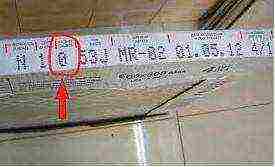 Be sure to read the information on the packaging. Adjacent calibers differ from each other by 1 mm. If the nominal size of the tile is 30 x 30, then the tile can be with an edge of both 29.5 mm and 30.5 mm. For the first caliber, the tile with the smallest dimensions is taken, here 29.5, then the numbering of the calibers goes in ascending order. On the box, for example, this caliber 3 tile will have 29.7 x 29.7 mm. On imported packages, sometimes only the size of the caliber may appear.
Be sure to read the information on the packaging. Adjacent calibers differ from each other by 1 mm. If the nominal size of the tile is 30 x 30, then the tile can be with an edge of both 29.5 mm and 30.5 mm. For the first caliber, the tile with the smallest dimensions is taken, here 29.5, then the numbering of the calibers goes in ascending order. On the box, for example, this caliber 3 tile will have 29.7 x 29.7 mm. On imported packages, sometimes only the size of the caliber may appear.
In any case, it is necessary to make it a rule to take tiles of the same caliber, and if it is not there, and the laying does not wait, then the neighboring ones in value. A slight discrepancy will hide the seam. That is, for the third caliber, you can pick up tiles of 2 and 4 calibers. A discrepancy of up to 5 mm is allowed, but this is very noticeable, especially on small tiles.
More correct articles about tiles:
— Tile defects
— Tile caliber
— Tile adhesive consumption rates
*** Delivery of goods by call to all regions of the Russian Federation by any transport service, rise to the floor, payment on the spot!
April 20, 2016
None of the manufacturers strive to produce low quality ceramic tiles. Each of the factories has always fought and will fight for each customer. But, unfortunately, not everyone has the technical ability to produce high-quality products. Surely, each of us has friends from whom we had to hear complaints about the purchased cladding. For some reason, everyone is accustomed to believe that if a product is produced in Italy or, say, Spain, then this is certainly an indicator of high quality. Therefore, the selection process often ends when the country of manufacture is determined. In fact, in order not to complain about buying a low-quality product, you need to understand the labeling of tiles.
What is the difference between tiles of different grades
The international standard EN98 dictates the requirements according to which the type of tiles is determined. Unfortunately, few consumers are familiar with it, if not to say - for the first time they hear about such a document. It will not be superfluous to know its basic provisions, so that later you do not accuse the manufacturer of dishonesty, although he put the appropriate designations on the products.
The EN98 standard stipulates that first-class tiles should be marked in red, the second class - with a blue marker, and the third - with green. Even when purchasing the cladding of the highest quality index, it is considered the norm to have up to 5% of tiles with deviations in the batch. For the second grade, up to 25% of defective elements are allowed. The third grade is not officially considered a marriage, but it can completely consist of products with one or another defect.
Defects on the tiles can be of aesthetic or functional nature. The first indicator is responsible for the integrity and color of the surface. In order to classify the tiles as the first grade according to this criterion, the following procedure is carried out: 30 individual elements are laid on a flat surface and, under 300 lux illumination, a thorough examination is carried out from a distance of 1 meter.
If we talk about functional defects, then they are unacceptable for the first grade. High quality tiles should not have chipping on the edges of the front surface, spots, damage to the front side, bubbles, bald spots, waviness, glaze grooves and other obvious flaws.
The aesthetic characteristics of the second grade tiles are determined using a similar technology, but observation is made from a distance of 2 meters. Such products are allowed the following functional defects:
- no more than two chips up to 2 mm in size on the front surface;
- bald patches (the total area should not exceed 10 sq. Mm);
- notches with a width of not more than 1 mm on the edges of the front surface (the total length does not exceed 10 mm);
- bubbles, spots, disturbance of uniformity, effervescence of glaze, displacement of decor or other flaws that will not be noticeable from a distance of 2 meters.
The third grade includes all tiles, the characteristics of which do not meet the requirements of the first / second grade.
In defense of manufacturers, it should be said that their goal is absolutely not to produce low quality ceramic tiles. Due to the peculiarities of the technological process, it is simply unrealistic to make the entire batch perfect. It is because of this that, after creation, each element is subjected to careful control, which involves dividing the tiles into varieties. Buyers, in turn, recommend to be more attentive to details, and not just follow the lead of advertising or chase low cost.

Which ceramic tiles are better to choose for the bathroom or kitchen? This question is inevitably faced by everyone who decided to update the interior of their apartment or house. And the unequivocal answer, the tile of which company is better, is usually not immediately found. There are not so many manufacturers on the ceramic tile market, but it is not easy to choose the best one that suits in all respects. Someone is confused by the reviews of tilers and users (the critical mass of negativity in them usually goes off scale, regardless of the manufacturer), for someone there is no favorite color scheme or pattern, someone is worried about the strength and durability of finishing materials. We offer you a rating of the most popular ceramic tile manufacturers in Russia, as well as an overview of the pros and cons of their products.
Kerama Marazzi 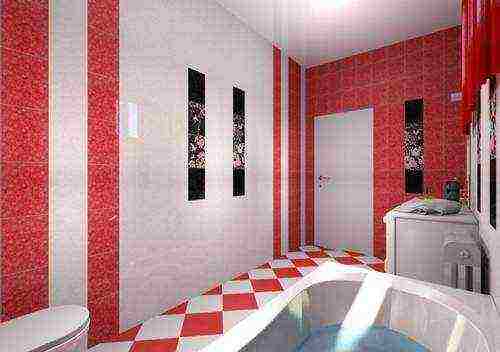
In the photo - the collection "Sakura Branch", the average price - 600 rubles / sq.m
Russian manufacturer with the largest market share in the low- and mid-price segment. It offers customers 12 collections (over 2000 tile names). Designers and marketers of Kerama Marazzi have focused on the geographical component: the collection catalog is more like an atlas telling about countries, cities and continents. There are, for example, English, French, Indian, Italian, Scandinavian collections - each with specific features for a particular country. From a technological point of view, the manufacturer is also very advanced: the company is the only one in Russia that produces ceramic granite made using the DRY PRESS dry-pressing technology, which makes it possible to very accurately imitate natural material. And from the point of view of the service, everything is fine here: in particular, in December 2015, an application for tablets based on Android began to operate, which reflects the entire range of the company with 3D panoramas and other beauties.
Advantages:
- Good assortment, including in the segment of inexpensive tiles
- Interesting design solutions
- Innovative technologies in the production of tiles and glaze for them
- Decent tile strength
- Developed retail network (over 300 brand stores) and distribution
- Developed information service
Flaws:
- Not all collections have a perfect combination of wall and floor tiles. Sometimes the decor has to be looked for among the products of other manufacturers.
Our rating: 9.8
Typical review: I'm decorating a familiar bath with Kerama. No marriage has yet been found upon arrival. It is cut normally, the geometry is not bad. Packaging, of course. not Spanish, where each tile is laid with a layer of polyethylene, but again, not broken. Take it if you like the color and pattern - the tile is one of the best among the inexpensive ones.
Fap Ceramiche 
Photo: www.fapceramiche.it
In the photo - collection Fap Bark, average price - 3800 rubles / sq.m
Elite Italian tiles for non-poor people. The main assortment is tiles for bathrooms, but there are many options for other rooms. The Fap Ceramiche catalog contains about 30 collections produced only at one factory in St.Sassuolo, which speaks of the consistent quality of the products. The main marketing focus of the manufacturer is on the environmental friendliness of tiles and exclusive design solutions. Imitation of natural materials (wood, stone, etc.) is one of the main activities of Fap Ceramiche. For example, in FAP Preziosa, natural marble is perfectly copied, and Fap Bark perfectly imitates precious woods in an absolutely ingenious way. Despite the high price, the quality of the tiles cannot be called ideal. There are deviations in size - up to 1 mm. This is not critical, but for such a cost, it is still surprising.
Advantages:
- Great design solutions
- Decent assortment
- Consistent product quality (one plant)
- Environmental friendliness
- Excellent tile resistance to abrasion and fading
Flaws:
- High price
- There are deviations in the size of the tiles
Our rating: 9.8
Typical review: The tile geometry is not perfect. The size "dangles" within 1mm. May vary in size due to color combinations. Fitted with a 2.5mm seam. Well cut and drilled. The exterior is impressive.
Keramin
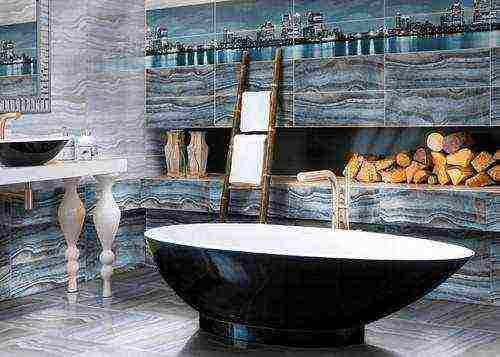
Photo:
In the photo - collection "Arizona", average price - 620 rubles / sq.m
One of the oldest trade marks in the post-Soviet space - with all the pluses and minuses of such a situation. On the one hand, it is a modern company with popular products of an average price level, on the other hand, the image of the Minsk Brick Factory is not the most attractive for marketing. One way or another, Belarusians produce about 80 tile collections. Many are available in several colors. Design solutions have geographical origins (collections of wall tiles "Venice", "New York" or "Tokyo", for example, and floor tiles - "Toledo"), historical ("Bastion") and landscape ("Pastoral", "Iris", "Sakura" and others). There are many versatile options suitable for the kitchen, and for the corridor, and even for the bathroom. There is a choice. Tile sizes - from 10 * 10 cm to 27.5 * 40 cm. The quality generally corresponds to the price: even in the most "designer" collections, you can find a discrepancy of tiles in size by 1-2 mm. And you may not meet - how lucky.
Advantages:
- Wide assortment and colors
- Interesting design solutions
- Good strength and fracture toughness
- Availability of universal collections
- Adequate price for most collections
Flaws:
- In some batches, users report problems with tile geometry
Our rating: 9.7
Typical review: "Keramin" produces good collections, and if there is taste and a good designer, your bathroom or toilet will delight you and your guests for a long time, but there is a great desire for the plant to update the equipment, to normalize the quality, and reduce the prices for tiles.
Golden tile 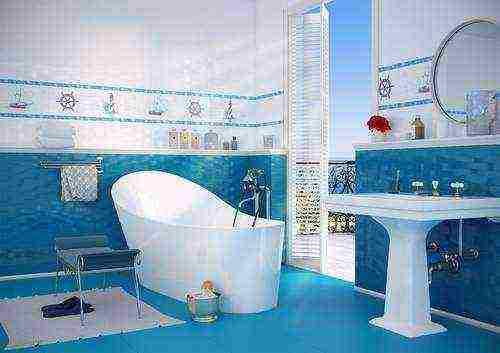
Photo:
In the photo - collection Ocean, average price - 695 rubles / sq.m
A Ukrainian manufacturer of tiles in the low- and medium-price segment, products of the Kharkov Tile Plant are produced under this brand. The presence of its own raw material base and the active work of designers (the company cooperates with the Italian design studios Tecnografica, Poligraph, SRS, has its own design bureau headed by an Italian specialist), as well as the active use of digital printing technology, allow us to produce a wide range of collections - now there are more than 60 -ty. The tile is produced in six standard sizes (20 * 30, 25 * 40, 30 * 60, 15 * 60, 30 * 30 and 40 * 40 cm). The quality is generally in line with the price. Here, discrepancies in shades within the same batch are very rare, but users note deviations in size. As, however, most manufacturers of inexpensive tiles.
Advantages:
- Decent quality of material (own raw material base)
- A very wide range
- Variety of design solutions
- Adequate prices for most collections
Flaws:
- Deviations in the size of the wall tiles
- Significant deviations in tone for different batches of tiles from the same collection
Our rating: 9.6
Typical review: We have been choosing tiles for the bathroom for a long time and settled on the Caesar collection. I was attracted by the appearance of the tiles, as well as the interesting execution of borders and decorative elements. After laying and grouting, I realized that I was not mistaken with the choice - it looks gorgeous. There were no problems with cutting tiles. But there is one BUT. The wall tiles are crooked. Visually, when buying, this is not visible, but when laying it is noticeable. There is a difference in length and width and a slight "bulge" of the tile. After grouting, all this is not striking. The floor tiles from this collection did not cause any complaints.
UNITILE ("Shakhtinskaya tile") 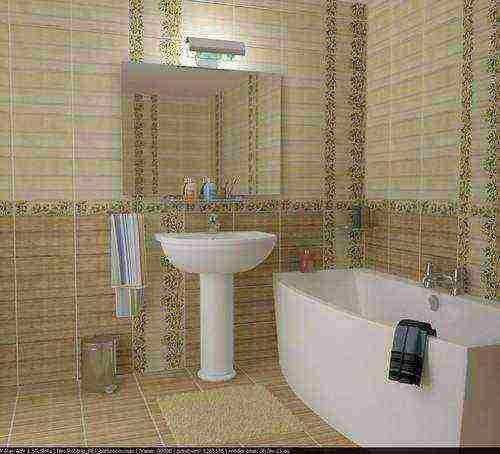
Photo:
In the photo - the collection "Rattan", the average price - 440 rubles / sq.m
A popular brand of inexpensive domestic tiles. The collections are designed by Italian and Spanish design studios. The basic raw materials are our own, the glaze and dyes are mainly imported. The assortment of the company includes 30 collections, made in various colors (including bright ones). The names are predominantly Italian names. Tile sizes - from 33 * 33 to 60 * 60 cm. The quality is average, brittle specimens are often found. Almost every user review contains complaints about size deviations and differences in shades. But with proper styling, the result is very good and sometimes is not inferior to much more expensive counterparts. This is a budget option for unassuming buyers - the best ceramic tile available.
Advantages:
- Wide assortment and colors
- There are simple universal solutions, which are sorely lacking in many expensive brands.
- An extensive trading network
- Low price
Flaws:
- Brittle wall tiles
- Deviations in sizes and shades within the framework of even the same batch
Our rating: 9.5
Typical review: The tile is flat along the plane, not curved. The husband laid himself. Found that the tiles differ slightly in size. And despite the fact that the party is one, they differ in tone. It seems insignificant, but in some places it is noticeable. The only good news is that the price is low, you can close your eyes to the shortcomings.
Cersanit 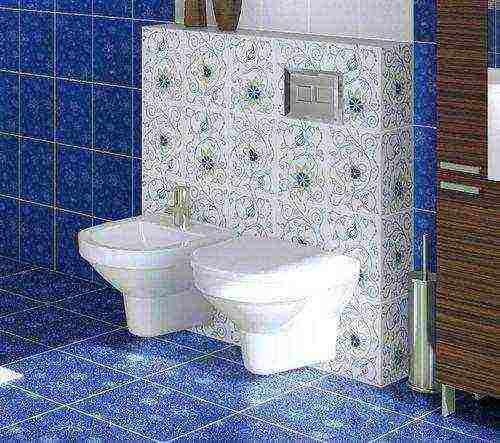
In the photo - the Gzhel collection, the average price is 530 rubles / sq.m
The range of this manufacturer includes more than 40 collections produced at 10 factories of the company in Poland, Germany, Russia and Ukraine. There are both budget and luxury tiles. The Cersanit plant in the Moscow region is the only one in the Russian Federation that produces glass curbs. Also, tiles with a size of 20 * 60 are still a rarity, of which Cersanit has 16 collections at once. Collections in the size of 25x35 Enigma, Gentle, Jungle, Latte are popular. Tile size 20x44 - Agat, Cherry, Gerbera, Wave sakura. In the size 20x30 - Mozaika, Novella, Siesta and others. The quality is unstable. Most of all, users complain about uneven side surfaces and fragility of wall tiles in some collections.
Peculiarities:
- A very wide range
- Huge number of colors
- Versatile and exclusive options are available
- Floor tiles are highly resistant to abrasion and fading
Flaws:
- Price higher than competitors in their price groups
- The fragility of glaze in inexpensive collections
- There are deviations in the size of the tiles in different batches
Our rating: 9.5
Typical review: It is better to buy tile collections in which you do not need to match the pattern, because at the slightest deviation there will be problems. And these deviations are often. I have been laying Cersanit for several years, and there were different sizes of tiles and wavy edges. But in general it cannot be said that this is a bad tile. If the hands are not crooked, then after laying, no defects are noticeable.
Which manufacturer's tile is better to choose?
It's difficult to find the ideal option, let's say right away. You have to make compromises. If you have money, then the best choice is, of course, Fap Ceramiche. But if financial opportunities are limited, then you need to proceed from the required appearance of the tile and the availability of all the necessary components. Well, and hope that the tile will be strong enough.

